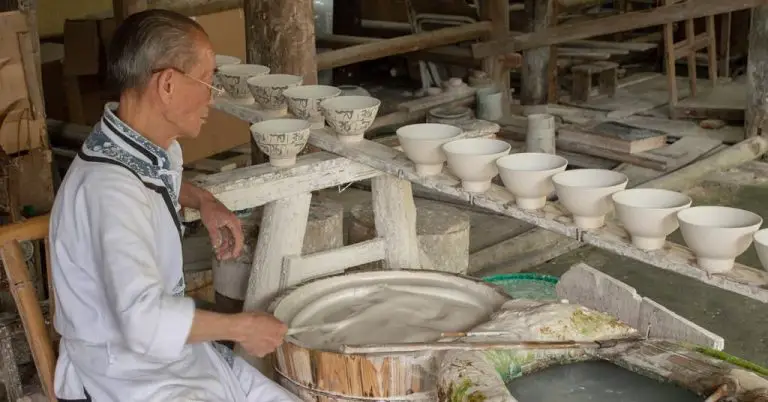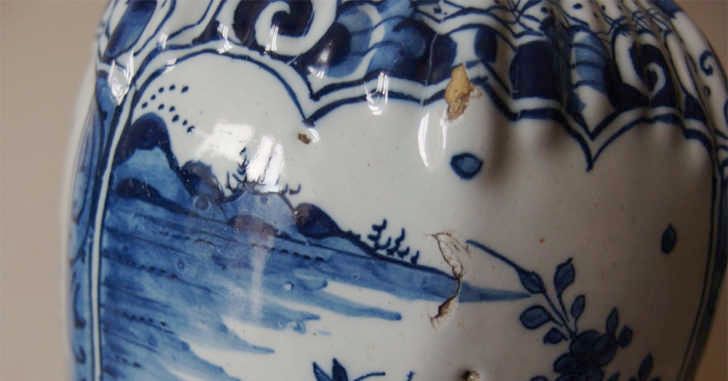What Is The Best Angle For A Teapot Spout?
The design of the teapot spout has evolved over hundreds of years alongside the spread of tea culture across the globe. While early teapots featured simple, straight spouts, advancements in materials, engineering, and taste preferences have shaped spout design into an artform.
The angle of the teapot spout is one of the most important factors in achieving the perfect pour. Too steep, and tea will gush out too quickly. Too flat, and flow will be reduced to a trickle. The ideal angle balances control of flow with minimal dripping.
Determining the optimal spout angle requires testing and consideration of multiple aspects: the viscosity of the tea being poured, desired pour speed and control, preferences of the culture, innovations in anti-drip mechanisms, and aesthetic priorities. This complex interplay of physics, artistry, and taste underlies the subtleties of teapot spout design.
Spout Design Basics
The spout is one of the most important functional elements of a teapot. Its length, width, and shape have a direct impact on the pour. Generally, a longer, narrower spout provides a more controlled pour than a shorter, wider one.
Spout design is also heavily influenced by the relationship to the pot body, handle and lid. The spout must align properly with the center of mass of the full pot to achieve an even pour. Too far forward and tea will dribble out the front, too far back and it will pour unevenly.
The attachment point to the body needs to be sturdy but also allow the spout to be oriented at the optimal angle. The spout must also clear the handle and lid without colliding when pouring. A seamless connection between spout, body and lid maintains aesthetic integrity. Subtle curves and flourishes can make the spout a decorative focal point.
Pouring Physics
The physics of pouring tea from a teapot involve some complex fluid dynamics. The most important factors are the speed and turbulence of the tea as it flows out of the spout, the flow rate, and surface tension effects.
The flow rate of the pouring tea depends on the velocity of the tea and the diameter of the spout opening. Faster pouring and a wider spout will result in a higher flow rate. However, too fast of a flow rate can cause splashing and make it difficult to control where the tea lands in the cup.
Turbulence in the pouring tea results from the difference in velocities between the inner stream and outer stream as the tea flows through the spout. This turbulence influences the tea’s contact with the air which impacts its temperature. Minimal turbulence is ideal for a smooth pour.
Surface tension is the tendency for the surface of the tea to contract to the smallest possible surface area. This results in the classic parabolic shape as tea pours out of the spout. The shape can be optimized by the spout design. Lower surface tension allows tea to pour in a thinner stream which promotes cooling.
Spout Angle Testing
Determining the optimal angle for a teapot spout requires extensive experimentation and testing. Researchers have conducted numerous studies analyzing how different spout angles impact the pour rate, drippage, and overall functionality.
In a typical spout angle test, teapots are created with identical designs but different spout angles, such as 30 degrees, 45 degrees, 60 degrees, 75 degrees, and 90 degrees. Using high-speed cameras and sensors, researchers can precisely measure the pour rates and drippage amounts at each angle.
Testing reveals that extremely sharp angles under 30 degrees pour too quickly and often drip. Meanwhile, wide angles over 75 degrees pour too slowly and unevenly. The ideal spout angle range appears to be 45-60 degrees. In this range, the pour rate is smooth and steady while drippage is minimized.
Additional factors like spout length, width, and curvature also impact the optimal angle. But comprehensive testing consistently shows the 45-60 degree range to be the best balance for teapot spout function and aesthetics.
Material Considerations
The material that a teapot is made from can greatly impact the flow from the spout. This is because factors like thermal conductivity, surface smoothness, and weight of the teapot affect fluid dynamics.
Glass and ceramic teapots tend to allow heat to escape more rapidly from the tea itself, while stainless steel and cast iron teapots retain heat better. The hotter the tea remains, the less viscous it is, enabling faster pouring. However, more heat retention also means a heavier teapot since metals conduct heat efficiently.
The smoothness of the interior spout is also key. Rough surfaces create turbulence in the tea’s flow. Glass and ceramic can be polished to an extremely smooth finish ideal for laminar flow. Metals on the other hand can oxidize or degrade over time, damaging the optimal surface quality.
Insulated teapots combine the advantages of heat retention while remaining lightweight. Vacuum sealed metal and foam insulated containers prevent conduction and convection heat losses from altering the tea’s viscosity during pouring. This enables a smoother pour regardless of material.
Cultural Differences
There are subtle but important differences in teapot spout design across cultures that reflect regional pouring styles and traditions.
Asian teapots, especially from China and Japan, often have longer, narrower spouts compared to British teapots. This allows for a slower, more controlled pour that is essential for brewing green teas and other varieties that require lower water temperatures. The emphasis is on gracefully guiding the tea into the cup or pot without splashing.
In contrast, traditional British teapots tend to have wider spouts that pour more quickly. This supports the cultural preference for rapidly filling a teacup with piping hot black tea. The broader spout also accommodates milk pouring.
Beyond form and function, teapot spouts hold cultural meaning. Asian teapots are designed to showcase the tea itself – its color, aroma and taste. British teapots emphasize the social ritual of tea time. Traditional designs in both cultures reflect these long-standing customs and aesthetics.
While modern teapot innovation has introduced new shapes and materials, cultural legacies still influence spout design today.
Modern Innovations
The ancient teapot design has seen some exciting new innovations in recent years. Engineers and designers have come up with creative ways to improve the teapot using modern technology and materials.
One area of innovation is in smart teapots. These teapots use sensors and microprocessors to automatically control variables like steeping time and temperature. Some even connect to smartphones via Bluetooth, allowing users to program custom tea profiles from an app.
New materials are also transforming teapot design. Heat-resistant borosilicate glass allows see-through teapots. Plastics like Tritan provide durability and allow molded-in strainers and infusers. Even metal alloys have advanced, with stainless steel and anodized aluminum offering lightweight, rust-resistant constructions.
Teapot patents are also on the rise, with inventors filing designs for built-in filters, self-heating elements, and automated lifting mechanisms for tea bags. While many of these patents are more conceptual than commercial, they show the creativity still bubbling in the world of teapot innovation.
These modern teapot advancements offer new conveniences and features for tea lovers looking to enhance their brewing experience. The ancient teapot continues to be improved through technology and design.
The Perfect Pour
The angle of a teapot’s spout is crucial for achieving the perfect pour. There are a few key factors to consider:
Angles for Optimal Pour Rate
The ideal angle range is between 45-60 degrees. This allows the tea to flow smoothly out of the pot at a controlled rate. Too steep of an angle, like 90 degrees straight down, creates too fast and forceful of a pour. Too shallow of an angle causes tea to dribble out slowly and unevenly.
Minimizing Drips
A proper spout angle will minimize drips and spills. Around 55 degrees helps tea pour steadily in a compact stream. This prevents drips down the spout or pot. Too wide of an angle splashes tea everywhere. Too narrow of an angle causes tea to cling to the spout and drip.
Range for Different Styles
The ideal angle can vary slightly for different types of teapots. Smaller teapots like Japanese kyūsu often have narrower spouts with 50 degree angles. Larger English teapots may have wider spouts closer to 60 degrees. The shape and flow rate of the spout should match the teapot size and intended style of tea service.
In summary, the perfect teapot spout angle is generally between 45-60 degrees. This range optimizes pour flow rate, minimizes drips, and accommodates different teapot styles. With the right angle, tea enthusiasts can achieve the perfect pour every time.
Considerations for Use
The spout angle of a teapot affects much more than just how smoothly tea pours. Spout design also impacts the teapot’s sturdiness, ergonomics, required pouring technique, and overall user experience.
A spout that angles too far forward or backward makes the teapot prone to tipping when lifted or poured from. The angle should provide a sturdy base of support. Ergonomics are also key – a spout angled for easy, controlled pouring without wrist strain enhances the comfort of use.
The user’s pouring technique can be either hindered or helped by the spout design. A gently sloped spout enables a more controlled, steady stream when pouring. More vertical spouts require a quicker pour to prevent dripping. Testing spouts with users provides insight into optimal angles.
Observing people interacting with the teapot also reveals usability issues and desired improvements. User testing spout angles highlights preferences and flows for everyday use. The feedback helps perfect the angle for effortless, drip-free pouring.
Conclusion
The ideal angle for a teapot spout is influenced by several key factors. Physics shows us that a curved spout with an angle between 90-110 degrees enables smooth laminar flow while minimizing drips. However, cultural traditions and aesthetic preferences also play a role, with Japanese kyusu pots featuring nearly vertical spouts while classic British pots have more sharply angled spouts around 45 degrees.
While there is no universal perfect angle, a compromise angle of around 60-70 degrees allows for good pouring control across various tea types and user preferences. Spouts in this range combine proper laminar flow, minimized dripping, and a pour rate that enables aroma development.
Future innovations in materials and 3D printing may enable more personalized spout designs tailored to specific teas and customer needs. But the basic physics of fluid dynamics will continue to inform the ideal angle range. With good design, teapots can achieve the perfect pour.




